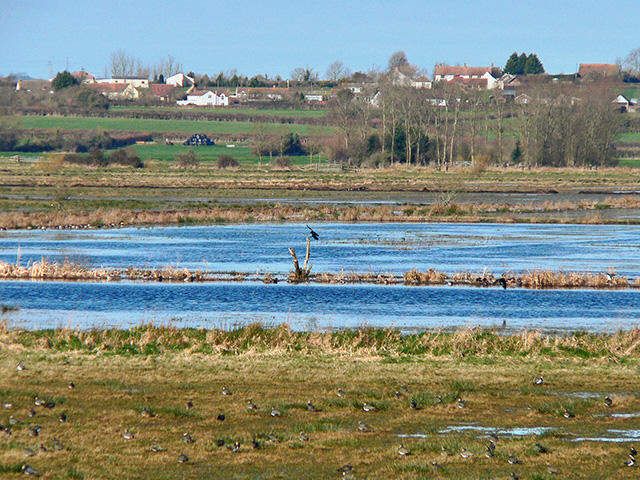Study: Fluvial Wetland Best Runoff Tool
Researchers: Current In-Field Conservation Efforts Not Moving Needle
LINCOLN, Neb. (DTN) -- Fluvial wetlands are the best conservation tools to reduce both nitrate and sediment loads, a study led by a scientist at the University of Kansas found. The work also points to the need for watershed-wide pooling of conservation resources as a best approach to reducing nutrient runoff.
The results of a study published in the latest edition of the Proceedings of the National Academy of Sciences, used computer modeling to study the Le Sueur River Basin in southern Minnesota.
Also, the study found while most conservation efforts focus on tillage management, precision fertilizer applications and other methods, those efforts may not be getting the most bang for the nutrient-runoff buck.
"However, despite evidence of the potential importance of near-channel processes, current water-quality policy heavily promotes field management," the study found.
"This is partly due to the limited ability of planning tools such as watershed models to predict improvements from near-channel management. The lack of a comprehensive, watershed-scale analysis tool that incorporates both near-channel and in-channel processes likely has resulted in misdirected conservation funding to management actions with limited cost-effectiveness for water quality."
The study conducted by researchers at KU, the University of Minnesota, University of Washington, Utah State University, University of California Irvine, Cornell University, Virginia Tech University, Iowa State University and others, found although slow-flowing fluvial wetlands near river channels are the most cost-effective tool, the cost to implement the practice is prohibitive to many farms.
"Although highly cost-effective, wetland construction was costly compared to other practices and it was not selected in portfolios at low-investment levels," the report said.
"Wetland performance was sensitive to placement, emphasizing the importance of watershed-scale planning to realize potential benefits of wetland restorations. We conclude that extensive interagency cooperation and coordination at a watershed scale is required to achieve substantial, economically viable improvements in water quality under intensive row-crop agricultural production."
P[L1] D[0x0] M[300x250] OOP[F] ADUNIT[] T[]
Fluvial wetlands are those associated with and connected to rivers and streams.
The authors said networks of artificial agricultural drainage including straightened streams and subsurface tile drainage have led to increased sediment erosion from near-channel sources downstream.
Although ongoing conservation efforts have yielded reductions in nutrient and sediment losses from farm fields, water-quality targets have not been achieved in rivers and the size of the hypoxic zone in the northern Gulf of Mexico has not been reduced.
The study found five factors that have contributed to the overall stalemate.
"Intensively managed" agricultural landscapes in the Midwest still receive annual or biannual applications of fertilizer and manure, "despite large legacy stores of nutrients," the study said. This leads to increased nutrient saturation on ag landscapes.
Second, study authors said nitrogen, phosphorus and sediment all are "spatially distinct" and are mobilized by different mechanisms.
"Conservation strategies that target single contaminants may not be effective for or may even augment delivery of other contaminants," the study said.
In addition, the authors said artificial drainage has continued to expand which leads to more rapid movement of water through drainage networks. That leads to increased field-nutrient losses and riverbank erosion. The authors said climate change has led to increased rainfall and runoff in the Midwest.
"Finally, agriculture-related water quality programs do not sufficiently account for heterogeneity in water quality benefits nor in costs of the management practices they incentivize, and thus, both the level and allocation may be mismatched with the magnitude of the issue," the study said.
"In essence, sustainable solutions to management of Midwestern U.S. agricultural watersheds must address the spatial complexity of sediment and nutrient sources in the context of increasing water yield from greater rainfall and rapid drainage."
The researchers said the most cost-effective methods for addressing the problem need to prioritize construction of fluvial wetlands at "optimal locations on the river network."
Because construction costs for wetlands is high and sensitive to location, the study said conservation programs should develop integrated watershed management plans.
"Economics likely also plays a role in the selection preference for small, shallow fluvial wetlands since dredging is one of the highest costs of wetland construction," the study said.
"Field management was found to be a persistent component of cost-effective watershed management portfolios regardless of the rate of new investment. Our results provide much needed guidance toward cost-effectively achieving water quality goals. Nonetheless, the costs are substantial in comparison to a single agency's annual budget, and the performance for the most effective management actions is spatially dependent, suggesting that strong coordination across agencies in spending and planning is needed."
Access the study here: https://www.pnas.org/…
Todd Neeley can be reached at todd.neeley@dtn.com
Follow him on Twitter @DTNeeley
(c) Copyright 2021 DTN, LLC. All rights reserved.




